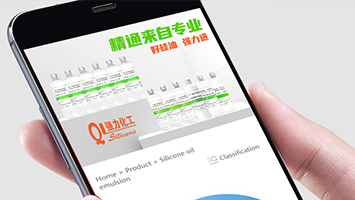- Home
-
About Us
About Us
Proficient from professional! As a professional chemical company, we focus on the combination of production, learning and research, and develop innovative products and solutions for chemical fiber, printing and dyeing, electronics, plastics, leather, rubber, daily chemical and other industries!
-
Join us
Join us
Time flies and we can't stop it! But when opportunity knocks on your door, what are you waiting for? Take advantage of your youth, try your best, and don't let the passing time leave regrets! Join us, join strength, let us fight for it together, and let the world change because of oil!
-
Product
Product
Combining R&D, innovation, production and sales, the company focuses on the production and development of new silicone materials: mainly dimethyl silicone oil and vinyl silicone oil, supplemented by hydroxy silicone oil, silicone emulsion, amino silicone oil, and textile auxiliaries. chemical plant.
-
News
News
For enterprises, news is an irreplaceable "official channel" for the dissemination of marketing information. The powerful news column will bring you the latest meaningful events and product releases of the company; at the same time, according to industry trends, it will publish or forward some major events inside and outside the industry that are closely related to us.
-
Contact Us
Contact Us
Contact us, we will provide you with high-quality products and high value-added services! Looking forward to your arrival! Best regards!
-
Online store
Online store
With the development of the Internet, enterprises seek development and growth, they need to keep pace with the times, and they need to be in line with international standards! Therefore, we are actively exploring to develop a new sales model, online and offline, multi-channel and multi-faceted, and seek sustainable development.



